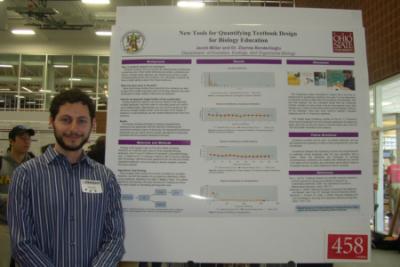Presenter: Jacob Miller
Advisor: Zeynep Benderlioglu

Academic publishers aggressively advertise their textbooks to professors for use in college courses. The professors, in turn, determine which of these books will best serve the learning needs of their students. Since not all textbooks can be as effective for student learning, leading textbook researchers are in need of new methods to empirically assess the actual learning outcomes. As a response, this project attempts to create a new tool based on recent studies in educational psychology and known models for text parsing for conceptual learning. How one learns from a given textbook can be tracked down by how each definition is used to explain the other. This can be both visualized and quantified as a network. Rigorous approaches to parsing text enable this network to change depending on how ideas are presented in varying textbooks. With the aid of the network software Cytoscape, this study has constructed three separate network models of concepts presented in three books. As it is the largest major at Ohio State, Biology textbooks were chosen and included: the 2nd and 3rd editions of Campbell’s Essential Biology, and, 1st edition of W. H. Freeman’s What is Life? A Guide to Biology with Physiology. The purpose of the first comparison was to establish whether there were any actual differences between editions, and that of the second was to determine the differences between textbooks from competing publishers. The results show that as the number of pages and definitions increase in a biology textbook, the interdependent nature of definitions decrease, where interdependency is calculated from the number of observed connections in a network with respect to all possible connections. This has important implications for educational psychologists, students, and publishers, as future studies can quantify at what pace and form new concepts can appear within a textbook for maximized learning.
